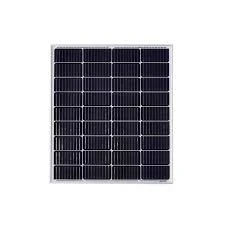Understanding the Block Diagram of a Solar Hybrid Inverter System Design
Understanding the Solar Hybrid Inverter Block Diagram
The solar hybrid inverter is a pivotal component in modern photovoltaic (PV) systems. It combines the functionalities of a solar inverter and an energy management system, enabling the seamless integration of solar energy, battery storage, and the electrical grid. To appreciate its complexity and versatility, examining the block diagram of a solar hybrid inverter is essential.
At its core, the diagram typically illustrates several key components that interact with one another to optimize energy usage. The primary inputs include solar panels, which harness sunlight and convert it into direct current (DC) electricity. This DC is then fed into the inverter system.
The first block in the diagram is the DC input stage. Here, the DC electricity from the solar panels undergoes an initial stage of processing. This stage may include Maximum Power Point Tracking (MPPT), a technology that continually adjusts the electrical operating point of the modules. MPPT ensures that the maximum possible power output is harvested, regardless of variations in sunlight conditions.
Next, the processed DC flows into the inverter section. This is where the magic happens the DC electricity is converted to alternating current (AC) electricity. This is a crucial step, as most household appliances and the grid itself operate on AC power. The inverter also includes safety features and protections to prevent overloads and ensure stable operation.
solar hybrid inverter block diagram

A distinctive feature of hybrid inverters is their ability to connect with battery storage systems. The block diagram typically includes a battery management system that monitors charge and discharge cycles. This allows excess solar energy generated during the day to be stored for use at night or during periods of low sunlight. Managing battery storage effectively is vital for maximizing energy independence and ensuring a reliable power supply.
Additionally, hybrid inverters can interact with the utility grid. This capability is often represented in the block diagram as a bi-directional connection. When battery storage is low or during peak demand, the inverter can draw energy from the grid. Conversely, when there is an excess of solar energy, it can be fed back into the grid, often providing economic benefits through net metering.
Another important component is the load management system. This part of the inverter regulates how energy is distributed to various electrical loads within the home. Smart load management can prioritize critical appliances and optimize energy usage to enhance overall efficiency.
Furthermore, the monitoring and control unit (often depicted at the top of the diagram) allows users to oversee the system’s performance remotely. Advanced hybrid inverters come equipped with smart technology, enabling app-based monitoring and real-time data analysis.
In summary, the block diagram of a solar hybrid inverter encapsulates a sophisticated interplay between solar panels, battery storage, the grid, and energy management systems. Understanding the relationships among these components reveals how hybrid inverters enhance energy efficiency, reduce reliance on fossil fuels, and pave the way for sustainable energy solutions. As adoption of renewable energy technologies continues to rise, so too does the importance of these intricate systems in shaping the future of energy consumption.
-
String Solar Inverter: The High-Efficiency Solution for Smart Solar EnergyNewsJul.14,2025
-
Revolutionizing Rooftop Energy with the Power of the Micro Solar InverterNewsJul.14,2025
-
Power Independence with Smart Off Grid Solar Inverter SolutionsNewsJul.14,2025
-
On Grid Solar Inverter: Powering the Future with Smart Grid IntegrationNewsJul.14,2025
-
Monocrystalline Solar Panels: High-Efficiency Power for the Future of Clean EnergyNewsJul.14,2025
-
Bifacial Solar Panel: A Smarter Investment for Next-Generation Energy SystemsNewsJul.14,2025







